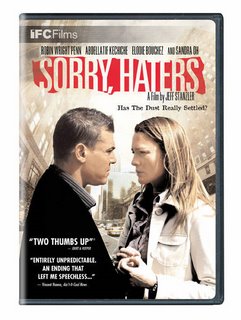
Written by Fumo Verde
Time/Life and CBS Paramount present The Odd Couple: Season One starring Jack Klugman and Tony Randall. This was a funny show for its time and the writing still holds true for life today, and why not, Neil Simon is one of the best playwrights of our time. Simon's The Odd Couple premiered at the Plymouth Theatre in New York City in 1965. It starred Walter Matthau as Oscar Madison and Art Carney as Felix Unger. In 1968, Matthau reprised his role in the film version and Jack Lemon played the role of Felix.
Klugman and Randall have the same chemistry that Matthau and Lemon do. That's due in part to the writing of Simon, but also the creative talents of Executive Producer Gary Marshall and Director Jerry Belson, who developed it for television. Klugman and Randall starred in the show, but Marshall and Belson were the creative souls that made it into a hit.
I grew up watching TV in the ‘70s and ‘80s and I remember watching this show. It started out with, "On October 16th 1965, Felix Unger was asked to remove himself from his place of residence. This request came from his wife." Then the theme music would start. Simon's idea of bringing a neat freak into the home of the super slob of the century was bound to create laughter.
The review disc only came with the first episode, "The Laundry Orgy". Marshall and Belson brought lots of elements from the play into this first show and added some of their own flavors to it. As the show opens, Oscar scores dates with the Pigeon sisters, two English women that live upstairs from Oscar and Felix, who were characters in the play. Unfortunately, Oscar makes the date for Friday, the night of the guy’s poker game. Felix, still suffering from his divorce doesn't really feel right about going on a date and doesn't want to cancel the poker game.
Instead of telling their friends, all who are married, that they have to cancel the poker game because they have dates, they try to scheme their way into ending the game early. First, Oscar says he feels sick, but that doesn't work. Then he hides a card, "We can't play with only 51 cards...I guess the game is done for tonight." To his dismay, the boys have Felix draw the missing card on a napkin. Finally, they try and sweat the guys out by turning up the heat, due to Felix's allegories.
When the women finally show up, Felix and Oscar take their dates out, kind of. Instead of spending the evening at home with the two ladies, they take them to the only place a professional photographer and a sportswriter can afford to take dates: the laundry room in the apartment complex. Smooth. As I remember them doing in every episode, Oscar gets mad at Felix, who in turn gets mad at Oscar. Oscar throws Felix out, but then they both say they are sorry and will try to understand how the other sees things. They live happy until next week’s episode.
I found myself laughing at jokes I had heard over two odd decades ago, yet the funniest material was the commentary by Belson and Marshall. Gary Marshall, to put it in the most basic language as possible, is just one funny freakin' guy. I found myself wiping the tears out of my eyes from what he was saying. Belson was funny too, but Marshall had me rolling, especially when he was telling the story of how the network wanted the show to have lyrics to the theme music, stating somewhere in the lyrics that "we’re not homosexuals...." as he chants the The Odd Couple theme music. Back then, if older men were living together they weren't considered roommates, and at the time, the network didn't want to imply anything. Wow, have times have changed.
The four-DVD set contains all 24 episodes from the first season. The set has a great collection of Special Features, including audio intros for every episode by Marshall, two other commentaries featuring Marshall and Klugman separately, appearances by Klugman and Randall on The Mike Douglas Show, and Klugman accepting his 1971 Emmy Award.
So if you’re into ‘70s sitcoms, this is one for the collection. The writing holds up and so does the acting, unlike some programs we see today. If you want to watch a show that had some substance, along with some good laughs, The Odd Couple is the answer.







